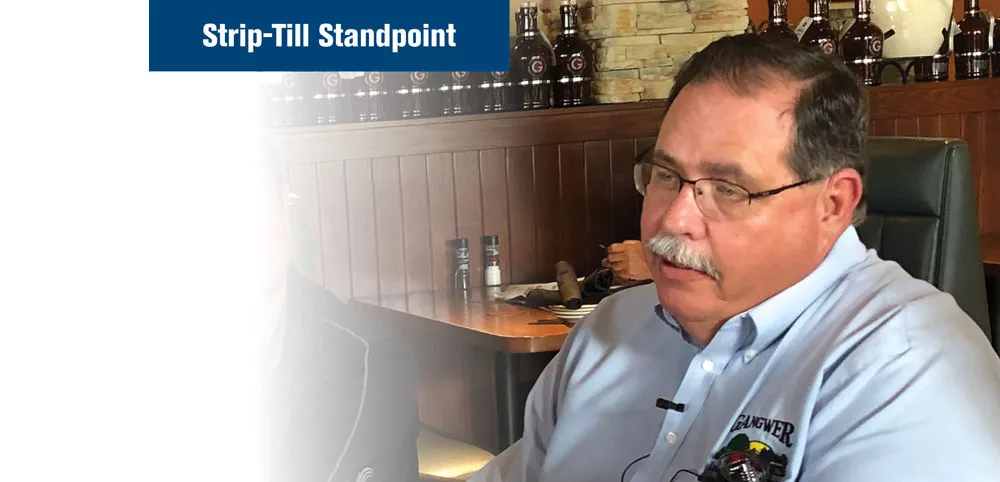So let’s talk about life after stripping. I’ve been to a few National Strip-Tillage Conferences now and will be presenting at the 2021 conference in Omaha, and a lot of the focus of the first meeting I went to was on the strip itself — creating it, preparing it and fertilizing it.
But I had a lot of questions and now in my third year of strip-tilling, I’m gaining some perspective on what happens after berms are built. I’m a fresh start farmer. My father was not a farmer, but my wife and I have been building our farm for the past 42 years. It’s taken us a while to get to the 1,700 acres we have today — we are kind of a rare breed.
We run a 16-row Hiniker 6000 strip-till rig, but we also run our fourth version of the Hiniker row cultivator, a 16-row CultiPro. Now I know most people hate cultivating, but it’s a valuable part of our operation because it allows us to complete three field objectives in one pass — mechanical weed control, sidedressing nitrogen (N) and an herbicide application.
We sidedress the last third of our 28% N with the cultivator and at the same time, band spray our post-chemicals in a 15-inch band. Our local Chem-Farm dealer set up adjustable nozzles that point down toward the row, so there is no risk of drift like there could be with a high-clearance sprayer.
But we only apply a full rate (44 ounces per acre) on about 50% of our acres, which has allowed us to save about $25,000 in herbicide application costs. We pull a Yetter All Steer Cart that holds 1,600 gallons of 28% and 400 gallons of Roundup.
“I do consider my system to be conservation tillage, but I’m also a conservationist of the wallet, first and foremost…”
I’ve been using Roundup with dicamba, a little Radiate and manganese for soybeans. For corn, I’ll spray Roundup with some Radiate and also an N and phosphorus foliar feed. I’m not covering every acre with the application, which for me, is where that economic savings comes in. I’ve also yet to meet a weed that is resistant to that steel when it cuts through the root zone. We cultivate a 10-inch-wide strip between the rows and about 7 inches deep to incorporate the fertilizer into the soil.
Anything between the row will in fact, be killed. People will object saying, ‘Gangwer, you’re cutting the roots.’ Yes I am. On our farm, if we expect to live off of shallow roots, we’re not going to make it. We need them to go deeper, which is why I’m not afraid to run that cultivator in soybean rows.
I bring a spade to the field all the time and am always amazed at how deep those roots run straight down in that strip, once we have that growing cash crop. I’ve tried to sneak over to our neighbor’s conventionally tilled field and I couldn’t even get my spade in the ground.
I do consider my system to be conservation tillage, but I’m also a conservationist of the wallet, first and foremost. If I’m going to do something, I want to maximize what I’m going to do across the field.







